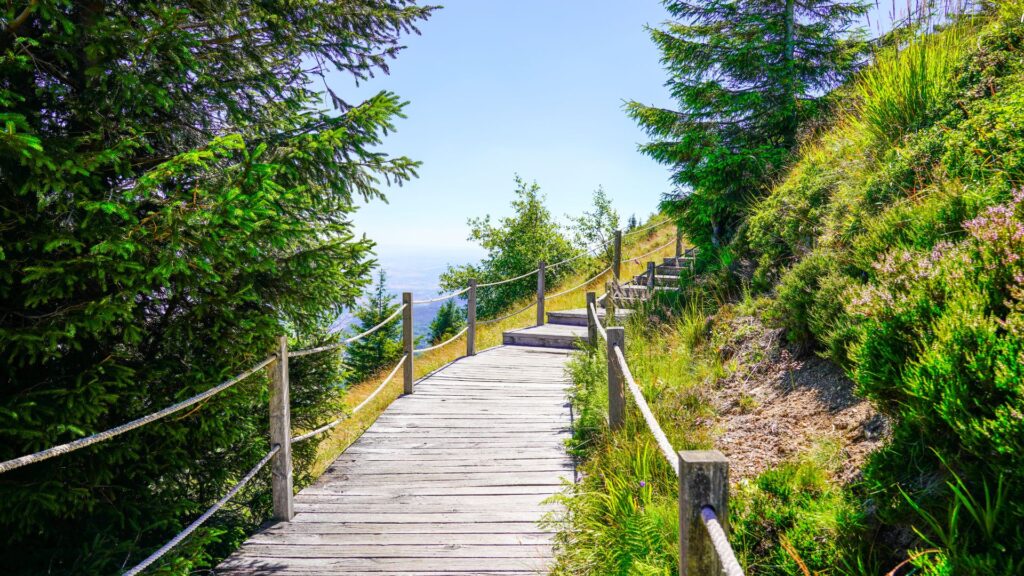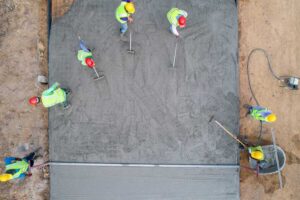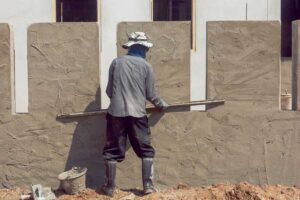
If you’re a homeowner in Tyler, Texas, looking to add curb appeal and functionality to your outdoor spaces, you won’t miss this! Your walkways and stairs are more than just a way to get from point A to point B. They can extend your home’s style and personality and elevate your outdoor spaces from ordinary to extraordinary.
This blog post looks at some stunning walkways and stairs that can transform your outdoor areas into beautiful, functional spaces. From natural stone steps to sleek modern designs, we’ve got something for every taste and budget. So grab a cold drink, sit back, and get ready to be inspired!
Choosing the Right Materials for Walkways and Stairs
When selecting materials for walkways and stairs, durability and longevity are vital. Concrete, natural stone (like granite or slate), and brick can withstand heavy use and harsh weather conditions. Concrete is low-maintenance with design flexibility. Natural stone offers timeless appeal with color and texture variations to enhance outdoor space. Brick provides classic durability. Prioritizing durability ensures safe and functional walkways and stairs for years to come.
Aesthetics and style are also important when selecting walkways and stairs materials. The chosen material should complement your home’s architectural style and blend harmoniously with the surrounding landscape. Materials like concrete or natural stone with clean lines and a polished finish are excellent choices for a modern and sleek appearance. If you prefer a more rustic or traditional look, materials like brick or natural stone with a rougher texture and warm hues can add character and charm.
Designing Walkways to Maximize Visual Impact
Maximizing visual impact is crucial when designing walkways for residential or commercial spaces. There are several factors that you need to take into account. One of the most significant factors is the use of color and texture. Creating an eye-catching design that draws attention can be achieved by combining materials like pavers, pebbles, and tiles. The placement of plants and lighting is also essential.
Adding greenery along the walkway can create a relaxing atmosphere and enhance visual interest. Furthermore, strategically placed lighting can highlight key features and add depth to the overall design. Finally, the layout and shape of the walkway itself can significantly affect its visual appeal. Curved walkways can add a sense of flow and movement, while straight paths can create a more formal and structured look.
DIY vs. Hiring Professionals for Walkway and Stair Construction
Regarding walkway and stair construction, the decision between DIY and hiring professionals ultimately comes down to your experience level and comfort with the task. While DIY projects can be a fun way to save money and learn new skills, it is essential to remember that walkways and stairs are critical for safety and stability. If you need the necessary tools or experience, hiring a professional may be best to ensure the job is done right.
Professional contractors have the experience, tools, and knowledge to create sturdy, safe walkways and stairs that meet local building codes. They can also provide valuable advice on materials, design options, and how to maintain your new structure over time best.
Tips for Installation and Maintenance
Preparing the site and measuring accurately
- Clear the area: Remove any vegetation, debris, or obstacles from the site where you plan to install walkways or stairs. This will ensure a clean and level surface.
- Measure accurately: Use a tape measure or a laser level to measure the dimensions of the area where you want to install walkways or stairs. Take into account any slopes or changes in elevation.
- Mark the boundaries: Use stakes or spray paint to mark the edges of the walkway or stairs. This will help you visualize the final layout and ensure accuracy during installation.
Step-by-step guide for installing walkways and stairs
- Excavation: Dig a trench or remove the top layer of soil to create a stable base for the walkway or stairs. The depth of the hole will depend on the desired height and type of material you are using.
- Base preparation: Fill the excavation with a base material like crushed stone or gravel. Compact the base material using a plate compactor or tamping it down with a hand tamper. Ensure that the base is level and provides a solid foundation.
- Edging installation: Install edging along the sides of the walkway or stairs to provide stability and prevent shifting. Use plastic or metal edging and secure it firmly into the ground.
- Walkway or stair installation: Lay the walkway or stair materials according to the manufacturer’s instructions. This can include concrete pavers, flagstones, bricks, or wood. Ensure that the materials are level and tightly fitted together.
- Joint filling: Fill the joints between the walkway or stair materials with sand or polymeric sand. This will help lock the materials in place and prevent weed growth. Sweep off any excess sand and ensure that the joints are evenly filled.
Benefits of Using Stamped Concrete for Patios
- Slope the walkways: Ensure that the walkways or stairs slightly slope away from nearby structures or buildings. This will help prevent water from pooling or flowing toward undesired areas.
- Install drainage systems: If your site is prone to water accumulation, consider installing a drainage system. This can include French drains, catch basins, or channel drains. Consult a professional if you need clarification on the best drainage solution.
- Erosion control measures: Use erosion techniques like installing retaining walls, terracing, or planting ground cover plants to prevent soil erosion around the walkways or stairs. These measures will help stabilize the soil and protect the integrity of the installation.
Regular maintenance to prolong the lifespan
- Cleaning: Regularly sweep or rinse off the walkways or stairs to remove dirt, debris, and leaves. Use a mild detergent or a specialized cleaner if necessary, but avoid using harsh chemicals that could damage the materials.
- Weed control: Remove weeds or vegetation growing between the walkway joints or stairs. Use a weed killer or manually pull out the weeds to prevent them from causing damage or dislodging the materials.
- Repair damaged areas: Inspect the walkways or stairs for any signs of damage, such as cracks, loose stones, or broken steps. Repair these areas promptly to prevent further deterioration and maintain the safety and appearance of the installation.
- Sealing: Depending on the materials used, consider applying a sealer to protect the walkways or stairs from stains, moisture penetration, and fading. Follow the manufacturer’s instructions for the appropriate type and frequency of sealing.
- Winter maintenance: Protect the walkways or stairs during winter in colder climates. Use snow removal methods that won’t damage the materials, such as using plastic shovels instead of metal ones. Avoid using deicing chemicals that could
Conclusion
At Tyler, TX Concrete Solutions, designing walkways is not just about creating a path from point A to point B; it’s about maximizing the visual impact of your outdoor space. A well-designed walkway can transform your yard into a stunning masterpiece when done right. Our team of experienced professionals at Tyler, TX Concrete Solutions understands the importance of thoughtful walkway design. We go beyond simply creating a functional pathway; we strive to create an aesthetically pleasing and visually captivating outdoor space. Contact us today to discuss your project, and let us turn your vision into reality.







